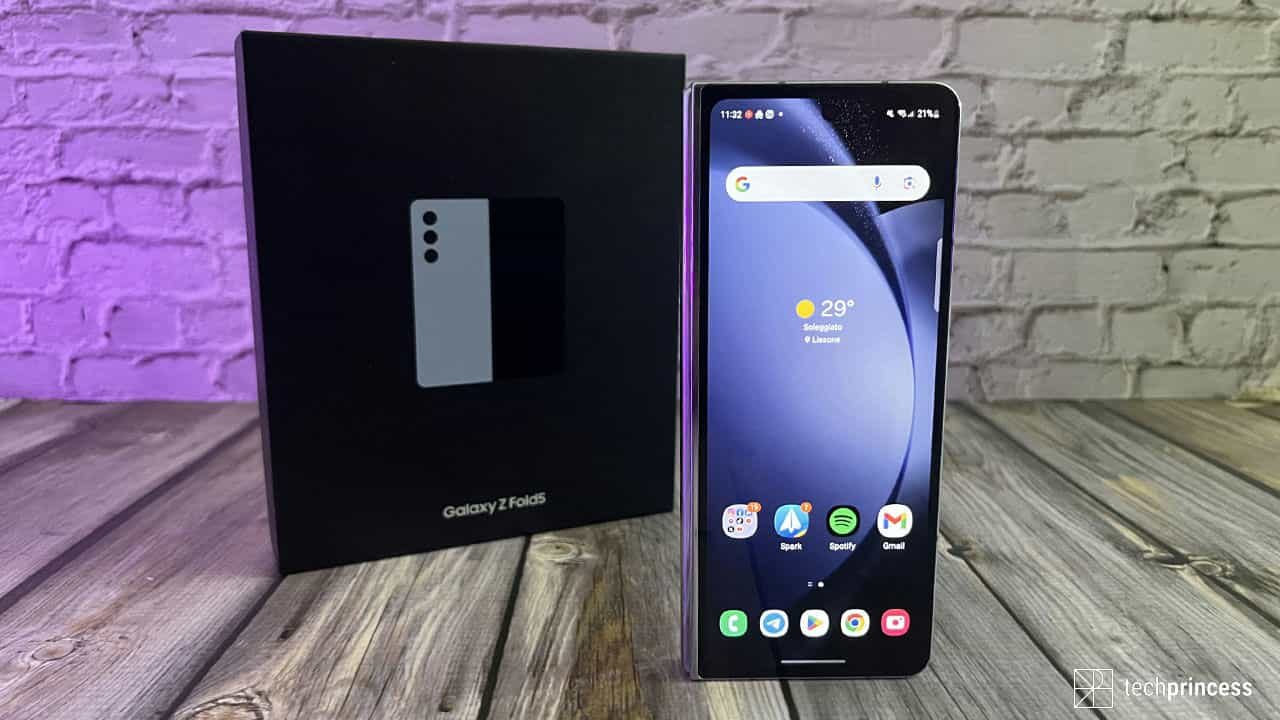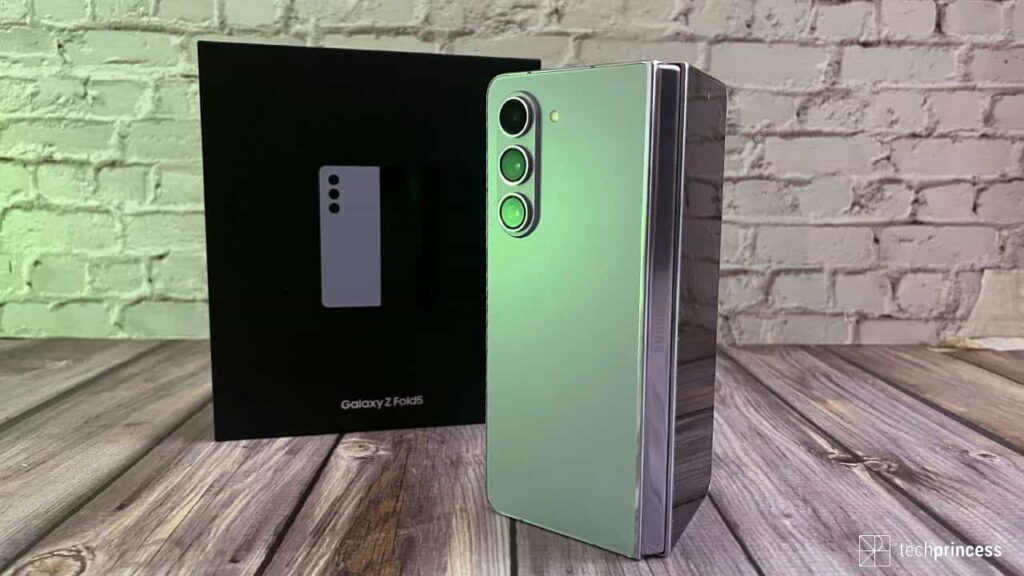On February 20, 2019, Samsung introduced its Galaxy Fold to the world.
It wasn’t perfect but it was revolutionary.
For the first time in years, smartphones acquired a new form factor, setting the stage for what could be the future of personal mobile devices.
“Could” because the general public has not yet decreed the success of these devices. Both because the cost remains high and because it is very difficult to understand them without having used them.
However, things are certainly changing: pre-orders of Galaxy Z Fold 5 and Z Flip 5 have doubled compared to their predecessors, an indisputable sign of the interest they now arouse in the end user.
But I would like to take a step back.
I spoke cost and use.
The first point is all in all intuitive: Galaxy Z Fold 5 part yes 1,999 €. They are not few, that is evident. The Flip 5, on the other hand, requires at least €1,249. Here too, not just a few but equal to a top of the range.
The fact is that a large part of the market is made up of medium ranges, so people tend to prefer to spend €400-500, or even something less. This means that leaflets could only become popular once costs have been reduced which, currently, certainly constitute a barrier to entry for a large part of the population.
Then there is the question “use”.
And it’s something you only realize after trying the foldables, and especially after using the Fold.
While flippables – i.e. devices as large as a classic smartphone that fold in half – we understand them more easily, perhaps out of familiarity with other phones and memories related to clamshell phones, devices like the Samsung Galaxy Z Fold 5 are somewhat complex to understand.
I try to explain myself better.
The Flip does everything a normal smartphone does, except that at some point you fold it up and put it in your pocket. And yes, now with the external display you do more things but that’s not exactly the point.
The Fold, on the other hand, is a normal smartphone when closed but expands the possibilities of use when you open it.
It may seem like an obvious, obvious observation, but this concept, that of increasing possibilities of use, you fully understand only when you actually use it.
Or at least that’s how it was for me.
I’ve watched colleagues and users use the Fold for years and I’ve always thought it wasn’t for me because “it’s too big” and “the screen has a weird ratio”, but it’s not true. After a week of use I started to love it, to understand what its plus is.
Why am I telling you all this? Because first of all I think it’s fair to tell you that Galaxy Z Fold 5 is the first Fold that I use intensively and, secondly, because before deciding whether or not it is right for you, you should try to go beyond the technical data sheet, beyond all that I can tell you in this review.
This is true in general and even more so in the case of such a particular device as Samsung’s foldable maxi.
The Samsung Galaxy Z Fold 5 review
Technical sheets in hand, the differences with last year’s model are not many.
Obviously the processor changes, with a more recent and performing Snapdragon 8 Gen 2 for Galaxy; the brightness of the displays increases, weight and dimensions decrease – even those from the S Pen Fold Edition – and finally we have a new hinge.
As anticipated, however, theory and specifications are one thing and daily use is another, so let’s try to understand what this Samsung Galaxy Z Fold 5 is like in everyday life.
Same but different
Aesthetically Galaxy Z Fold 5 and Z Fold 4 look like twins.
To distinguish them at a glance, I suggest you look therea position of the LED flash: If it’s to the right of the cameras it’s a Fold 5, if it’s below the cameras it’s a Fold 4.
If, on the other hand, you look at the two devices when closed, observing their profile, well … here things become simple, and the merit goes to the new Flex Hinge hinge.
In fact, until last year the Fold didn’t fold perfectly in half but remained a small sweeper in which coins, hairpins and the like were then stuck, as well as naturally being a fast track for dust.
Now things have changed because the Samsung device folds perfectly in half, without leaving any opening. This long awaited solution has also made it possible to reduce the thickness which now stops at 13.4mm. Quite a gain over the previous model’s 15.8 – 14.2mm (depending on where you measure it).
Samsung has also subjected its Fold to a light diet. We therefore lose 10 grams which lead the device to have a total weight of 253 grams. Just to give you a comparison: iPhone 14 Pro Max weighs 240.
However, Galaxy Z Fold 5 remains a solid and resistant device, with IPX8 certification and glass body – the Gorilla Glass Victus 2 – and Armor Aluminum. In short, lighter but very ready to face everyday life.
We also find the possibility of keeping it tilted at any angle between 75 and 115 degrees, the fingerprint reader integrated in the power button, the comfortable volume rocker and the trolley for 2 nanoSIMs.
Open…
There are two ways to use the Fold 5: open and closed.
Open means using the large display Dynamic AMOLED 2X which it is equipped with: 7.6 inch, resolution of 2,176 x 1,812 pixels, a refresh rate that reaches 120 Hz and all the quality that Samsung has accustomed us to over the years. So we have deep blacks, lots of sharpness and optimal color rendition, with the possibility to choose one of the two available modes: Live the Naturale.
The menu also allows you to decide whether or not to activate the adaptive brightness, brightness which has increased compared to last year. The peak is 1750 nits, which is a lot and which, above all, guarantee excellent visibility even in direct sunlight.
You can also decide whether to use 120Hz and variable refresh rate or whether to keep 60Hz fixed and then there’s style, font size, layout and much more.
The internal screen settings, however, are not limited to its rendering but are extremely connected to the software, One UI 5.1. It is the flagship of Samsung, also and above all on leaflets.
Although the competition has made great strides in this field, no one exploits the “foldable” essence of these devices as well as the One UI.
Surely 5 years of experience help but there is also a deep knowledge of Fold users, their needs, the use made of these devices.
Here because multitasking reaches its peak on Galaxy Z Fold 5.
The Korean giant is perfectly aware of the target: choose this specific device if you work on the move and don’t want to make sacrifices. You have to keep everything under control, always. You have to be quick. And everything must be simple and intuitive.

From the data collected and the company’s know-how, features such as the activity bar. In fact, in the lower part of the device you can have a series of applications chosen by you, passing from one to another on the fly or dragging them to compose your ideal screen. Now then you can combine these selected apps with them 4 recently opened applications. One click and you go from one screen to another. On the fly, without hesitation.
There are also i pannelli Tap Edge, so a swipe from the right edge is enough to open what you need. And what you need can be apps, contacts, functions and much more.

Both the activity bar and the panels can be disabled but believe me, that would be a mistake. Their presence allows you to combine applications on the fly up to a maximum of 3; above these you can place instead a floating screen which you can then move wherever you want. Now then you can do another very useful thing: push the window beyond the right or left edge so that it remains open and partially visible without occupying the space reserved for other apps.
Know that it is one of the innovations that I appreciated the most because this means, for example, listening to a YouTube video and, in the meantime, consulting the browser, reading emails, playing games or anything else you feel like doing.

Then returns the possibility of deciding whether to use the entire screen for apps or not, defining the behavior of individual software. There’s also the easy mode – simplified if you need it – and the option to specify which apps you want to continue using on the external screen when you close your Fold.
All these settings allow you to adapt the terminal’s internal screen to your needs, whatever they may be. You can therefore indulge your desire for multitasking, engage in recreational activities using all of its 7.6 inches or even read a book as if it were an ebook reader.
True, the format is still a bit unusual when used for videos, films and TV series but we actually got used to the presence of the black bars above and below quite quickly.
I remind you then that Galaxy Z Fold 5 benefits from Flex mode, which means that when the screen is tilted from 75 degrees to 115 degrees you will see the display of some apps change. For example, the Gallery displays photos and videos above it, and in the bottom half the controls, ditto the camera. There are messaging apps that move the keyboard down or YouTube that keeps the video at the top and everything…


















Leave a Reply
View Comments